#w. e. b. du bois
Explore tagged Tumblr posts
Text
This W. E. B. Du Bois' critique of Robert E. Lee doesn't make anymore sense than anything else I've ever read. In my last blog, I came to conclusion that Robert E. Lee did, in fact, want to maintain wealth and privilege. Robert E. Lee did not have the moral strength and courage to speak up against his cultural upbringing. I 100% agree with this critique and I love how I accidentally stumbled on this right after I wrote his biography on my blog.
I love how this statement further critiques Caucasian Americans who do not do well with speaking up against others due to the fear of lack of social support. In this statement, I can appreciate Du Bois' commentary on the need for acceptance among white Americans.

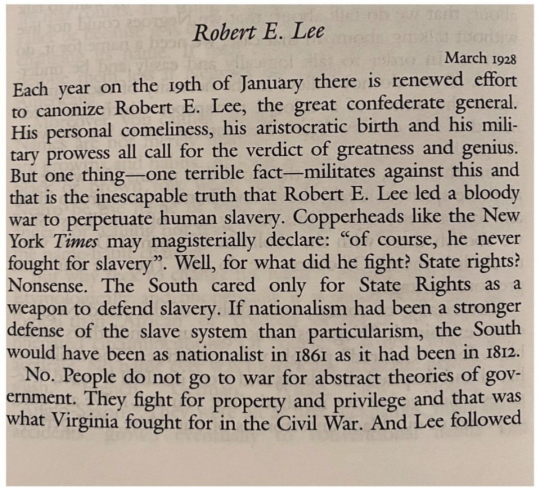
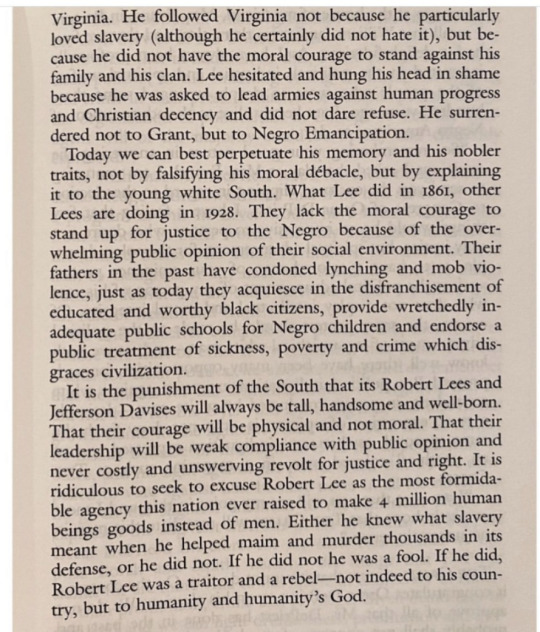
#culture#history#people#race#american civil war#w. e. b. du bois#thoughts#spilled thoughts#philosophy#black history#african american#slavery#american politics#issues#state#class
3K notes
·
View notes
Text
"We should measure the prosperity of a nation not by the number of millionaires but by the absence of poverty, the prevalence of health, the efficiency of public schools, and the number of people who can and do read worthwhile books." W.E.B. Du Bois.
#quote of the day#quote of today#w. e. b. du bois#prosperity#wealth#nation#nation building#numbers#millionaires#health#healthcare#poverty#efficiency#schools#public schools#education#people#choices#decisions#possibilities#books#books and reading#books books books#agenda#politics#reading#what matters
310 notes
·
View notes
Text
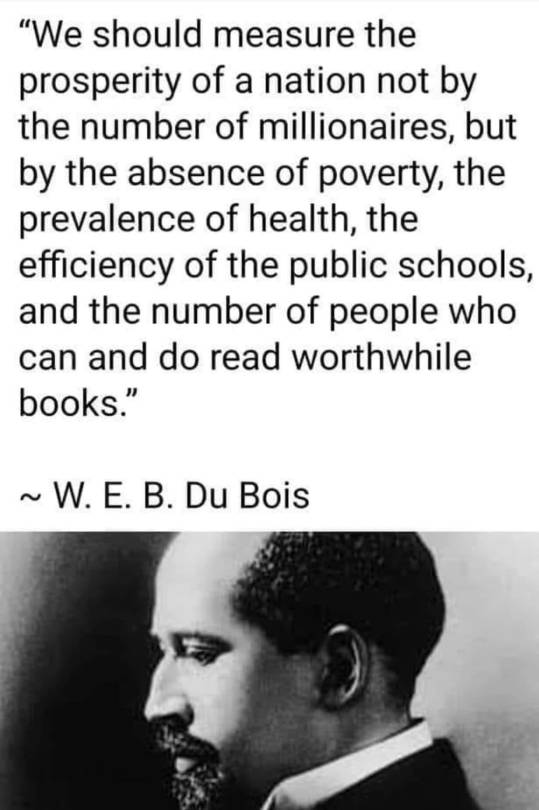
350 notes
·
View notes
Text

W. E. B. Du Bois, February 23, 1868 – August 27, 1963.
29 notes
·
View notes
Text

#photography#quote#black spirituality#black history#blm#w. e. b. du bois#quotations#books and reading#black boy joy#hoodoo#black girl magic#black boys#james baldwin#toni morrison#democracy
26 notes
·
View notes
Text
Just...
I find it strange that at 30+ I'm going through this black awareness/awakening but it's prolly due to being farther away from major influences on my life not providing a healthy dose of it throughout my life
I mean I'm educating myself as much as possible and I feel like I'm alienating myself from a lot of people, education breeds this contempt within myself a I feel neglectful and hateful that I was unaware through no real fault but still feel guilty that I didn't look into it more when I was younger but my mind was more occupied on the next time I could call a place a home or when our next move would be so I give myself a little forgiveness.
It's never too late to learn

#black awareness#black#negro#double consciousness#w. e. b. du bois#atlanta#colorism#dreads#dreadlocks#dread head#dread heads#dreadhead#dreadheads
8 notes
·
View notes
Text

One Party, Two Names
#One Party#Two Names#w. e. b. du bois#usa is a terrorist state#usa is funding genocide#usa#america#ausgov#politas#australia#book quotes#quotes#quoteoftheday#book quote#life quote#beautiful quote#quote#auspol#tasgov#taspol#fuck neoliberals#neoliberal capitalism#anthony albanese#albanese government#quotable
8 notes
·
View notes
Text

when dubois said “This is not Europe gone mad; this is not aberration nor insanity; this is Europe; this seeming Terrible is the real soul of white culture.”
#our world#ecosystem of white supremacy#politics#w. e. b. du bois#israel is an apartheid state#our history is your history#this is Europe
15 notes
·
View notes
Text
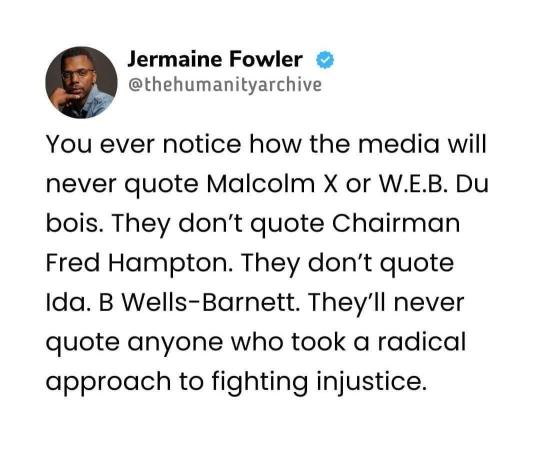
9 notes
·
View notes
Text

In 1903, one of America''''s most monumental literary works of African Americans "The Souls of Black Folks" was published by W.E.B Du Bois.
W.E.B. Du Bois was born on February 23, 1868, in Great Barrington, Massachusetts. Du Bois was a historian, civil rights activist, sociologist, author, editor, and Pan-Africanist. In 1909 he was also one of the founders of the National Association for the Advancement of Colored People (NAACP). On February 12, 1909, in response to a race riot in Springfield, Illinois, and the horrific acts that were being done against African Americans, a little over 50 white liberals and 7 African Americans met to discuss the racial crisis. Out of this meeting came the existence of the NAACP. Some of the African Americans in attendance were W. E. B. Du Bois, Ida B. Wells-Barnett and Mary Church Terrell. Among the white liberals at the meeting were Mary White Ovington and Oswald Garrison Villard, The organization continued the focus of the Niagara Movement which was the precursor to (NAACP).
6 notes
·
View notes
Text
A Black Philadelphia Reader: An exerpt
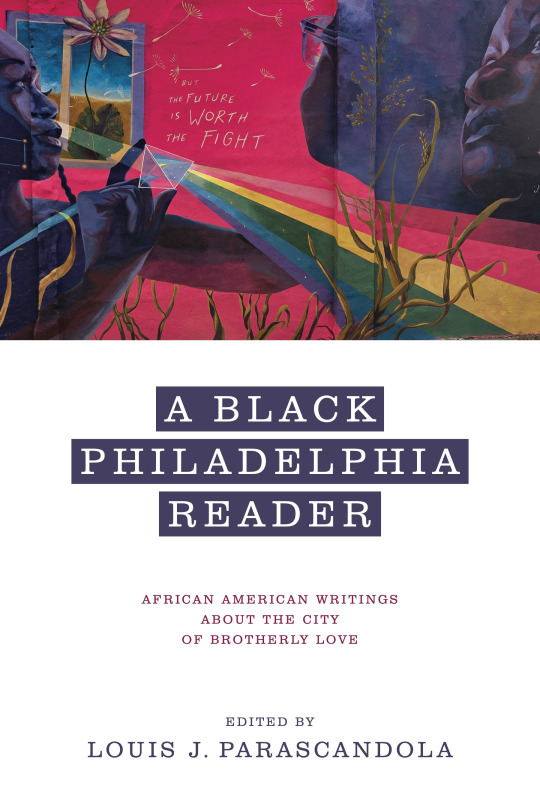
The common date given for the settlement of Philadelphia is 1682, when William Penn established a Quaker colony, providing it with a name that means “one who loves his brother.” Penn intended an idyllic “greene country towne,” one that was well ordered, with large open spaces within its twelve hundred acres. It “was the first major American town to be planned.” Penn envisioned his “towne” as a place of freedom, particularly in terms of religion. As with a certain amount of history, much of this is myth. The land, of course, had been settled by the Lenape Indians long before the Europeans arrived. Additionally, Penn’s “greene country towne” soon became a highly congested city, plagued by disease, crime, and fires. Its vaunted freedom was largely limited to White Protestants, and its “brotherly love” certainly did not extend to most immigrants, to non-Christians, or, in particular, to its Black residents.
Blacks have been at the center of Philadelphia’s history since before it was even known by that name. More than two thousand Blacks lived in the area once called New Sweden between 1638 and 1655. The fledgling colony encompassed parts of western Delaware and parts of Pennsylvania that now include Philadelphia. One of the most famous of these settlers was Antoni Swart (Black Anthony), a West Indian who arrived in the colony in 1639 aboard a Swedish vessel. Though initially enslaved, records indicate he eventually became free and was employed by Governor Johan Printz.
The history of Black Philadelphians has been one fraught with both great promise and shattered dreams from its beginnings until today. Philadelphia was, as historian Gary Nash observes, “created in an atmosphere of growing Negrophobia”; still, despite ongoing racial prejudice, “it continues to this day to be one of the vital urban locations of black Americans.” It is this paradoxical condition that is the most characteristic dynamic of the city’s relationship with its Black citizens. One facet of this relationship has been constant: whether African Americans have thrived here or suffered egregious oppression, they have never remained silent, never letting anyone else define their situation for them. They have always voiced their own opinions about their condition in their city through fiction, poetry, plays, essays, diaries, letters, or memoirs. The city has been blessed with a number of significant authors, ranging, among others, from Richard Allen to W. E. B. Du Bois to Jessie Fauset to Sonia Sanchez to John Edgar Wideman to Lorene Cary. In addition, there have been numerous lesser known but also forceful figures as well, including the enslaved people Alice and Cato, who were only known by those names. Whether they were native sons and daughters or spent significant time in the city or were there only long enough to experience the city in an impactful moment, Philadelphia has touched them all deeply. This anthology is a documentation of and a tribute to their collective voice. The focus here is not just on writers with a Philadelphia connection but on the authors’ views on the city itself. The hope is to provide a wide variety of Black perspectives on the city.
There is something special about what leading African American intellectual W. E. B. Du Bois once labeled “the Philadelphia Negro.” One reason for this uniqueness is the city’s relationship to its Black inhabitants, in part caused by their intertwined, virtually symbiotic, history. No other major Northern city in the country has had such a long connection with African Americans, one forged in the seventeenth century, and Blacks have never stopped coming. They first settled largely in what are now called the Old City and Center City, where some Blacks still live. They have since scattered throughout the city, sometimes by choice but often by necessity and force, today mostly residing in Northern and Western Philadelphia. Migration patterns have changed over the years, as in other cities, but the Black population in the city has rarely declined and has often increased in number. Philadelphia was, as of 2020, the sixth-largest metropolis in the nation, and Blacks make up more than 40 percent of the population there, more than the percentage of any of the other top ten cities in the country.
Philadelphia has a vibrant and culturally rich history, offering enormous promise to its inhabitants since its beginnings. It was founded with the premise of religious freedom and steeped in the radical independence movement that created this country. The city was settled by Quakers, perhaps the religious group that, in popular opinion if not always in fact, has most vociferously been associated with opposition to slavery. The “peculiar institution” was, in fact, almost nonexistent there by the early years of the nineteenth century. Philadelphia was the center of the Underground Railroad, with such legendary conductors as William Still. As the closest major city situated above the Mason-Dixon line, symbolically separating the North from the South, many fugitives from enslavement passed through Philadelphia. Some moved on, but a large number stayed, as the city seemed like the promised land for many African Americans. This is the powerful narrative of the city’s history that still holds true for numerous people today when they think of Philadelphia.
There is also something unique about the Black experience in this city. Blacks have had a nominal freedom throughout most of their existence in Philadelphia, yet when we look under the surface, Philadelphia’s treatment of African Americans has hardly been benign. The city has held out promises, but unfortunately many of these promises were not kept. Philadelphia may be situated in the North, but as Sonia Sanchez so eloquently writes in her poem “elegy (For MOVE and Philadelphia),” in many ways “philadelphia / [is] a disguised southern city.” There were Quakers, many of whom were abolitionists and worked for the Underground Railroad, but there were many others of the faith who were slaveholders, including the colony’s founder, William Penn. And even if the city was replete with abolitionists, it did not ensure that they viewed African Americans as equals. Blacks were, in fact, disfranchised from the vote in 1838, never to regain it until the ratification of the Fifteenth Amendment in 1870. Although the city was the center of the antislavery movement, not all of its White residents opposed slavery, and even if they did, the Fugitive Slave Acts of 1793 and 1850 hampered efforts to keep Blacks out of bondage. Before and after the Civil War, as demonstrated throughout this text, the city experienced a series of violent racial conflicts and has continue to practice an ugly pattern of segregation in housing, transportation, education, and employment, severely limiting the prospects of improvement for its Black citizens. There is a long history of racial injustice practiced by Philadelphia’s police as well as Black residents being ignored, at best, by the city government.
A Black Philadelphia Reader: African American Writings About the City of Brotherly Love is available for pre-order from Penn State University Press. Learn more and order the book here: https://www.psupress.org/books/titles/978-0-271-09731-2.html. Take 30% off with discount code NR24.
#Philadelphia#Philly#Pennsylvania#African American#African American History#PA History#Pennsylvania History#City of Brotherly Love#Black Writers#Black Authors#Black Writer#Black Author#W. E. B. Du Bois#Harriet Jacobs#Sonia Sanchez#John Edgar Wideman#Public Health#Housing#Policing#Criminal Justice#Public Transportation#Urban Studies
3 notes
·
View notes
Text
#ella josephine baker#ella baker#civil rights activist#human rights advocate#grassroots organizing#leadership philosophy#mentorship#student nonviolent coordinating committee (sncc)#w. e. b. du bois#thurgood marshall#a. philip randolph#martin luther king jr.#diane nash#stokely carmichael#bob moses#radical democracy#social justice#racial equality#gender equality#civil rights movement
5 notes
·
View notes
Text
#black history#voting#vote or die#william c. anderson#william c anderson#lucy parsons#w. e. b. du bois#kwame ture#black radical tradition#bill clinton#liberalism#democracy#neoliberal democracy#voting is not harm reduction
1 note
·
View note
Text
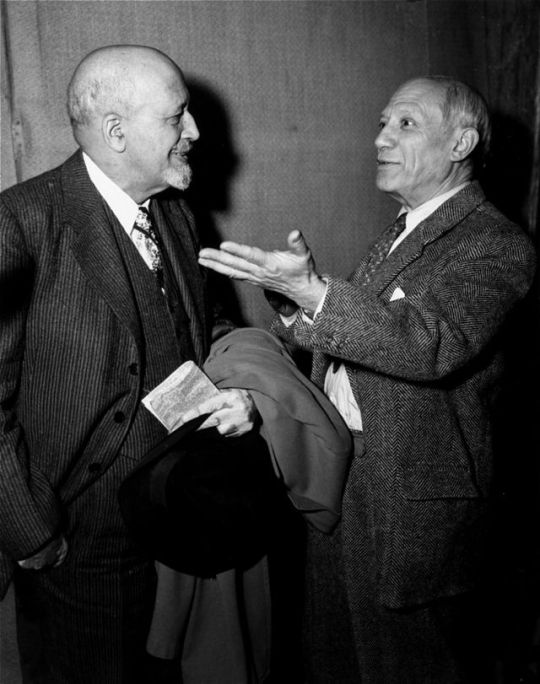
W. E. B. Du Bois, February 23, 1868 – August 27, 1963.
With Pablo Picasso in 1949.
37 notes
·
View notes
Text
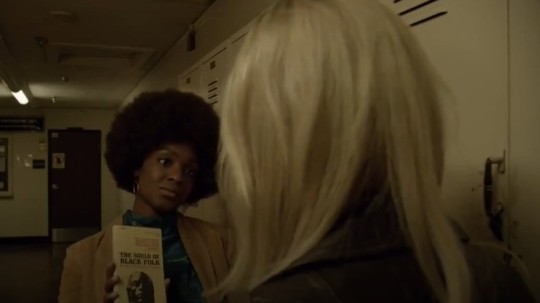
The Souls of Black Folk by W. E. B. Du Bois
Aquarius: "Piggies"
4 notes
·
View notes
